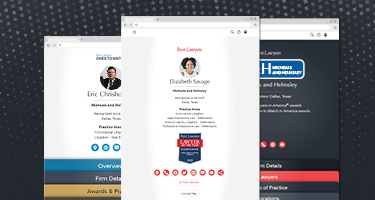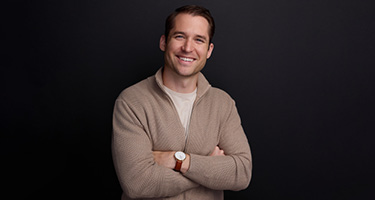While the vast majority of these injuries are fairly minor, hundreds more are considered major or catastrophic and may result in permanent disability. What every injury has in common is that it is an unanticipated injury; in the blink of an eye tens of thousands of people each year are suddenly confronted with injuries from car accidents, and usually such victims know very little about coping with such unexpected injuries.
In this blog post, I look at some of the most common types of injuries people sustain in car accidents, the general prospects for recovery, and the kinds of benefits and compensation that are available to assist in recovery, and to help such a victim come to terms with life with a permanent disability.
Brain Injuries
Up to half of the traumatic brain injuries doctors treat are the result of car accidents. In a particularly serious collision, a person may hit their head on hard parts of the car such as the steering wheel, dashboard, or window causing a damaging blow through blunt force trauma. This type of trauma can cause contusions (bruising of the brain or bleeding at the site of impact, or the complete opposite side of the brain if the force is great enough), or penetration through the skull coming into contact with a sharp object. Even if the head does not come into contact with another object, the force of impact on the human body can cause soft brain tissue to impact the skull.
The most common type of traumatic brain injury is a concussion. This injury can be sustained from either blows to the head or internal brain movement/motion, and can range from mild to serious. Concussions occur when blood vessels and/or nerve cells in a part of the brain become stretched or damaged. Most seriously, a concussion causing a blood clot can be fatal.
Sometimes a person will briefly lose consciousness after a concussion. However, when conscious a concussed person may feel dazed, confused or have some other form of cognitive impairment. They may experience headaches or see behaviourial and/or emotional changes. Interestingly, diagnostic scans do not always reveal physical evidence of concussions and medical professionals will sometimes diagnose the condition by ruling out other possible reasons for symptoms. Concussions can take months to years to heal, and sometimes the injury to brain function is permanent or does not completely resolve.
Whiplash-type movement of the brain can also cause a condition called diffuse axonal injury. Neural structures in the brain can tear if a shaking or rotational movement causes part of the brain to move while another portion remains stationary. If the neural tearing is extensive, it can result in temporary or permanent brain damage (cognitive or functional impairment), coma, or even death. Moreover, secondary issues can arise if the tearing in the brain disrupts normal chemical processes.
It is essential to seek medical treatment if you are in a car accident where you’ve sustained blunt force trauma or may be at risk of brain injury due to body movement. Early treatment of concussions can greatly improve outcomes. Be careful to also monitor yourself for symptoms like headaches, nausea and vomiting, confusion or memory loss, or unusual behaviour such as loss of normal judgement or temper control issues.
Broken Bones/Fractures
Any bone in the human body can sustain a fracture (the medical term for a broken bone), but human instinct to brace for impact during car collisions tends to increase the likelihood that fracture will occur in an extremity (arm, leg).
Fractures range widely in terms of severity and prognosis for recovery. Generally fractures are characterized as either displaced (the break causes the bone not to be in alignment) or non-displaced (a break does not affect alignment) and open (a break causes a piercing of the skin) or closed (where the skin remains intact and there may not be outward signs of damage). Comminuted fractures are fractures where a bone shatters into multiple pieces.
The type of fracture, its location in the body, and factors such as the age of the injured person, all affect the speed of recovery or likelihood of complications or permanent disability. Generally closed and aligned fractures have faster recovery times and less risk of infection or other complication. Fractures in young (and growing) bodies and the elderly usually take more time to heal or result in long-term complications.
Paralysis and Other Spinal Cord Injuries
Certain fractures of or injuries to the spinal cord can interrupt the usual brain-body communication required to move arms, legs, or use other motor skills or regular range of motion. Like brain injuries, it is extremely important for any spinal injury sustained in an accident to be thoroughly examined by a medical professional in order to prevent aggravating or worsening the injury, and to obtain prompt proper treatment.
Some common symptoms of spinal injuries and/or paralysis include:
- tingling, numbness, or loss of sensation (usually in limbs)
- involuntary muscle spasms or irregular reflexes
- reduced range of motion
- loss of control over bowels and/or bladder
- changes in sexual function
Although some types of paralysis are temporary, if a nerve suffers extensive damage or is completely severed, the damage is often permanent. Medical advances have opened some promising avenues for regenerating nerve function, but it may be sometime before a breakthrough occurs. Paralysis can be confined to one limb (monoplegia), two limbs of one side of the body (hemiplegia), the legs and/or lower body (paraplegia), or arms and legs (tetraplegia - formerly quadriplegia). About half of all cases of acquired paralysis are estimated to be the result of car accidents.
Life (and The Law) After a Car Accident Injury
Whatever the level of injury, there are medical and legal options accidents victims can pursue following these incidents.
In Ontario, anyone involved in a motor vehicle accident is eligible to receive accidents benefits depending on the severity of their injuries (minor, non-catastrophic, catastrophic) and regardless of who is at fault. These benefits include funds for medical and rehabilitation expenses, attendant care, house-keeping and home maintenance, income replacement (or funds for non-earners), caregivers, and the cost of examinations.
Although these benefits are defined by the Statutory Accident Benefits Schedule (SABS), the nature of injuries and disability can be complex, and ensuring insurance companies pay the appropriate amounts of funds can sometimes require expert legal negotiation or legal action. It is also important to note that changes in the SABS may affect how much an injured party receives based on their level of injury. Optional Benefits have been introduced to offset the reductions and are available at a cost to the insured if they have been purchased through an insurance broker or company.
If another person’s negligence contributed to the accident and/or injury, it is also possible to seek compensation for damages for pain and suffering, additional lost income, medical and other expenses not covered by accidental benefits. Automobile makers who have designed or manufactured vehicles with flaws or defects that result in poor crashworthiness or which contributed to the nature of an injury sustained in the accident may also face legal action. Sometimes road conditions are partly to blame, and lawsuits are often successful in such situations.
















